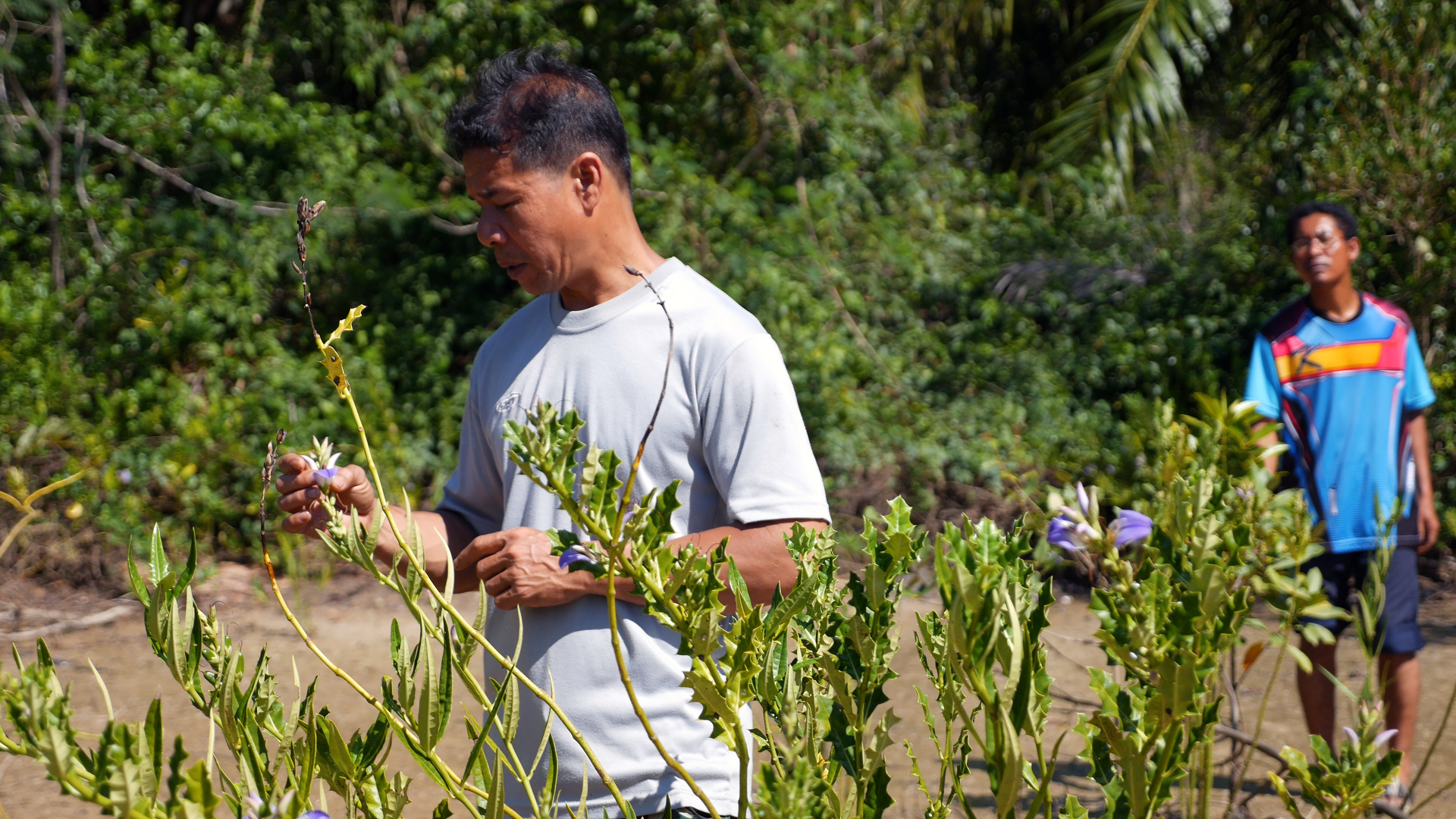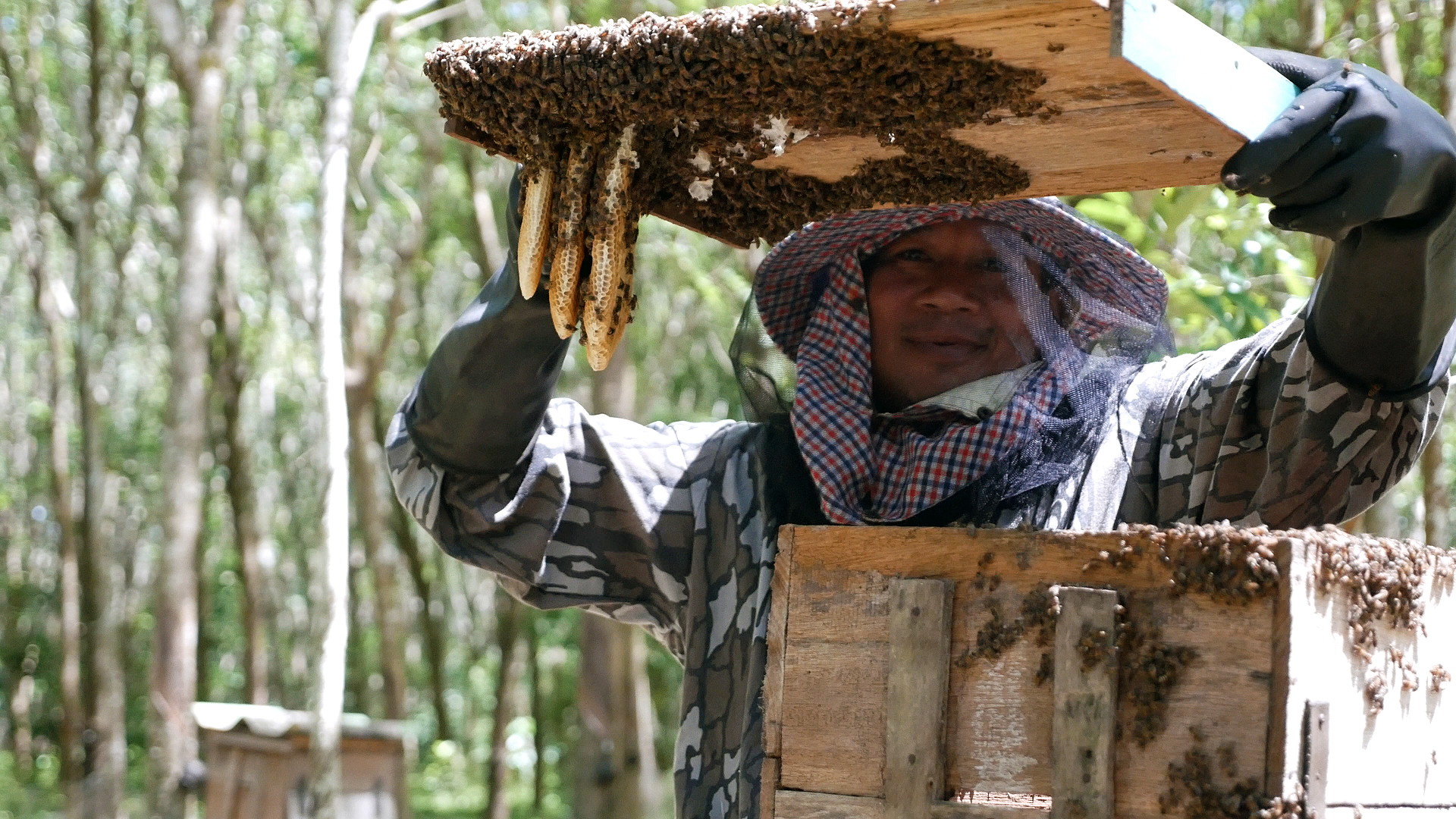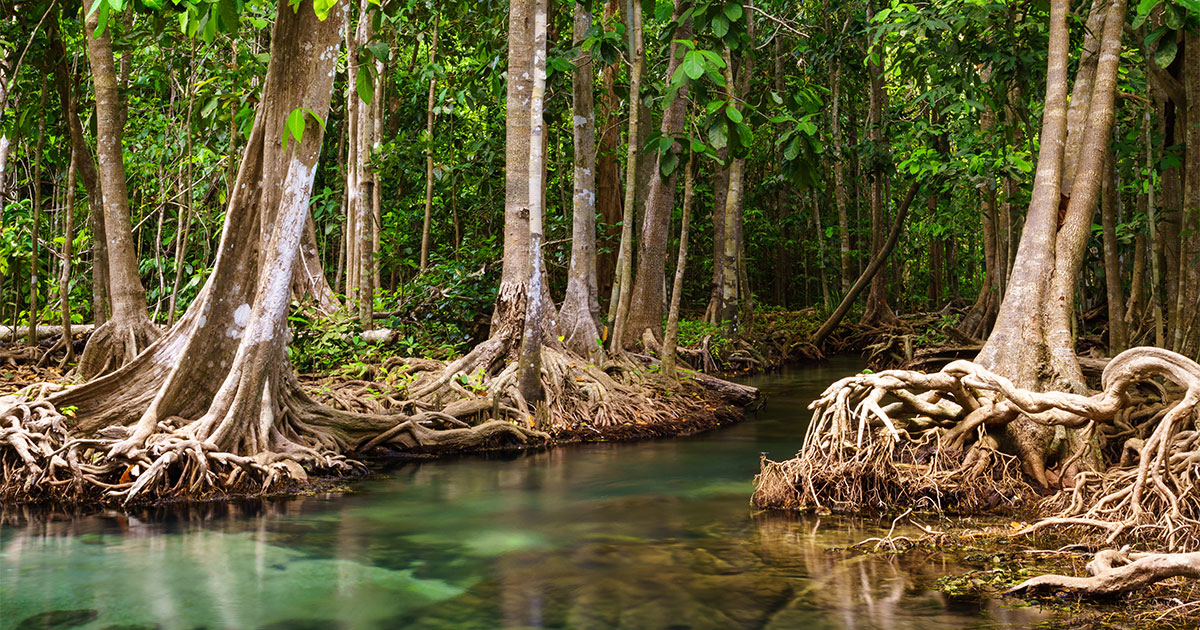The Andaman Coast, Southern Thailand, is well known for its lush tropical forests and pure-white beaches. Nestled among this postcard-worthy backdrop, the local villagers of Nai Nang are intrinsically connected and dependent on the mangrove-covered isles. But the last fifty years have seen nationwide deforestation leading to land degradation, loss of livelihoods, and the deterioration of fisheries. Now, community members are using a unique method that not only restores their lost mangrove forests but generates a sustainable livelihood for the region.
At the interface of land and sea, mangrove forests are among the most productive ecosystems on the planet. These vital habitats help combat climate change, protect coastlines, and provide sustainable livelihoods. Since the shrimp aquaculture boom in the 80s and 90s, mangroves are being lost at an unprecedented rate in Thailand, with almost half of the countries forests now destroyed. Other countries are also experiencing similar levels of decline, increasingly losing out to shrimp farms, tourist resorts, agriculture, and urban land development over the past few decades.
“My village use to be full of mangrove trees, but over the years, the mangroves became heavily degraded and it became harder to catch crabs, seabass, and shrimp,” explains Bang Non Meelam, resident of Koh Klang village, east of Nai Nang. “We are now trying to recover our lost mangrove forests.”
Supported by the Mangrove Action Project (MAP), coastal communities are working hard to turn the tide on mangrove loss by finding new ways to revive these vital forests and the many ecosystem services they provide. This unique method comes in the form of beekeeping.

Observing natural systems during mangrove restoration. (Image credit: Leo Thom)
For over ten years, MAP has been working with communities along the Andaman Coast to restore mangroves. Using a holistic Community-Based Ecological Mangrove Restoration (CBEMR) approach, MAP encourages local residents to conserve and rebuild their mangrove forests in a way that best works with nature. An important aspect of this model is providing training to members of the community on sustainable mangrove management and removing destructive practices with the introduction of alternative sustainable livelihoods. On the Andaman coast, this comes in the form of honey production.
Not long after the project was launched in 2014, Nai Nang families began experimenting with beekeeping. By placing bee boxes close to the mangrove forest, local beekeepers noticed an improvement in mangrove restoration. The bees were pollinating the mangrove trees and playing an important role in maintaining tree biodiversity, subsequently creating a more resilient coastline in the face of climate change and sea-level rise. This exciting discovery led to the formation of a local enterprise, the Nai Nang Apiculture Group, whose members seek to supplement income through beekeeping while supporting vital mangrove conservation work.
“We have realized that we’re not raising the bees, the bees are raising us. The honey isn’t the only thing we get from the bees,” said Bang Sutee Pankwan, member of the Nai Nang Apiculture Group.
MAP worked with the apiculture group to implement sustainable beekeeping practices, such as reducing pesticide use, which facilitates healthy native bee populations, develops raw honey, and promotes mangrove conservation.
The community-led initiative also includes a Women’s Group who are producing honey-based products such as soaps, shampoos, and balms. All the honey is sourced locally from the 1,200 beehives colonized by wild bees (Apis cerana). Honey is harvested only once per year. The bees gather nectar from the seasonal flower blossoms of fruit orchards and a variety of mangrove species such as Avicennia alba, Excoecaria agallocha, and Sonneratia caseolaris. This unique combination of nectar gives the honey a distinctive taste with a hint of sea salt.

Nai Nang honey production. (Image credit: Mangrove Action Project)
Today, the Nai Nang Apiculture Group are looking to improve conservation efforts by working with stingless bees. These species of bee live solely within mangrove forests. The pollination techniques and confined foraging flight paths of stingless bees further promote tree biodiversity. The apiculture group see this new collaboration with the stingless bees as a way of giving back to their regenerating mangroves. On top of the essential work they do for the mangrove habitat, the honey of stingless bees is more valuable than that of honeybees’ as it includes propolis, a resin-like substance with a high medicinal and therapeutic potential.
MAP and the Nai Nang Apiculture Group are now working on training other communities interested in mangrove restoration and the supplementary livelihood of harvesting high-quality honey from the mangrove flowers. In 2018, MAP and the apiculture group hosted a beekeeper training workshop for new communities. The workshop provided a great opportunity for Nai Nang trainers to disseminate their valuable knowledge and help other villages benefit from their success by replicating these methods within their own villages.
Many communities in Thailand are experiencing the repercussions that come with the loss of vital mangrove forests across the country. By introducing a new community-led approach and an alternative sustainable livelihood, the future of this coastal community and its mangroves looks all the more sweeter, thanks to honey.
This feature appeared in Environment, Coastal & Offshore (ECO) Magazine's 2021 Spring edition, to read more access the magazine here.





